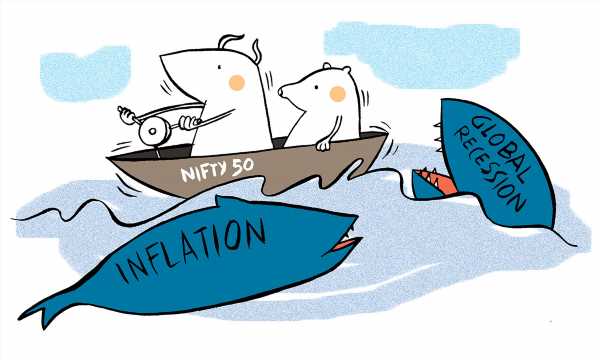‘Best way to beat inflation and create wealth is…’
‘…over the long-term can be done only by investing in equities.’
‘And during weak macros, one needs to allocate more than drawing it down, because they offer the best entry point.’
The Nifty50 index has mostly been range-bound in the last 20 months.
Madangopal Ramu, head of equity and fund manager at Sundaram Alternate Assets, tells Puneet Wadhwa/Business Standard that market valuations have become reasonable and offer a good entry point for investors.
What is your outlook for the markets?
We are positive on the markets from a medium-to-long term perspective.
In 2022, macros were against equities.
Inflation has clearly peaked out now, interest rate hike has nearing a pause, and growth indicators for India continue to be strong.
Hence, it’s difficult not to be positive on Indian equities.
With Nifty50 almost consolidating at around 18,000 levels for 20 months and earnings growth continuing during this period, valuations have become reasonable and offer a good entry point for investors.
What is the ideal portfolio mix between the large, mid, and small-caps you suggest at the current levels?
Financials, consumer discretionary and manufacturing should lead the market going ahead.
If one wants to play the India growth story, they cannot be doing it by investing in slow growth large-cap traditional sectors like information technology, pharma, FMCG, utilities and commodities.
Since these sectors form a major portion of Nifty50, we suggest investors mix over 50 per cent of the portfolio with mid, small-cap stocks with companies in sectors like retail ending, consumer discretionary and manufacturing, along with some high-growth large-cap stocks to create an optimum portfolio.
Your sector preference?
Global recession is a definite worry and we are, therefore, avoiding stocks of export related companies, except specialty chemicals, where the visibility remains strong due to the China+ 1 story.
On the domestic front, the economy seems to have been resilient so far despite high inflation and interest rates.
With signs of inflation coming down, we don’t expect the downturn to be severe and long-lasting.
Given the low crude prices, stable currency, and good tax collection, we can expect policy interventions to support growth at an appropriate point over the next one year.
So, odds are favoring equities at the current juncture if one is ready to take a slightly long-term call.
Can the IT sector be a dark horse?
The earnings season (excluding IT) was almost in line with expectations, and many mid-cap stocks in our portfolio delivered better-than-expected results.
Importantly, most of the portfolio companies guided for a better outlook for 2023.
With the valuations coming down in the last 18 months in these stocks and the outlook on growth continuing to be strong, they offer a good entry point for investors who are ready to stay invested for at least three years.
Do you see investors shift from the debt to equities in case the RBI goes in for a prolonged pause?
We never advocate the strategy of shifting to debt from equity to overcome inflation in the short term.
Generally, investors tend to make this shift after a correction in equity markets and make the shift back to equities after a reasonable rally and tend to lose out on both sides.
Fixed income yields may at best equal inflation for the short-term, but fail to create alpha over inflation.
The best way to beat inflation and create wealth over the long-term can be done only by investing in equities. And during weak macros, one needs to allocate more than drawing it down, because they offer the best entry point.
Some investors tend to do otherwise, which we don’t recommend.
Feature Presentation: Rajesh Alva/Rediff.com
Source: Read Full Article


